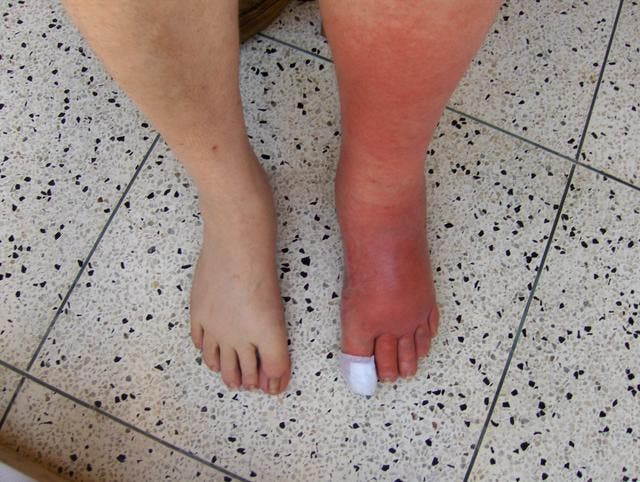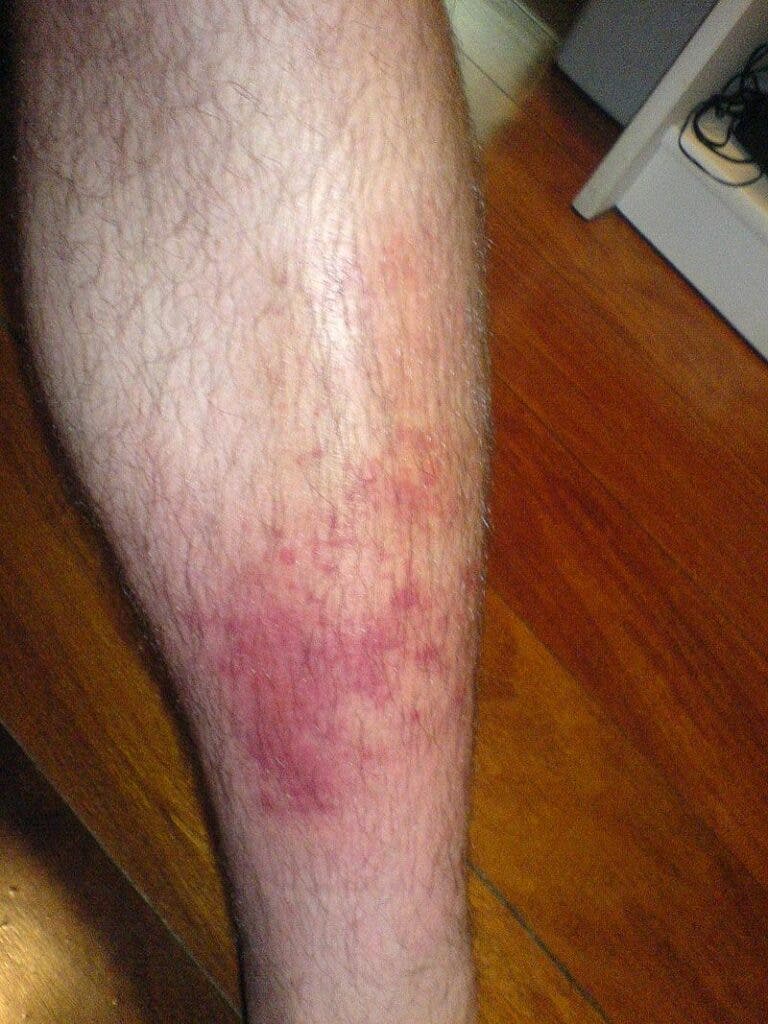
Cellulitis is one of the most common bacterial skin infections, characterized by tenderness, swelling, and redness around affected sites. Unlike other skin infections, which can be more superficial, cellulitis involves the skin’s deeper layers and can become life-threatening if left untreated.
According to the American Academy of Dermatology, about 15 million Americans suffer from cellulitis every year.
Although they might sound similar, cellulitis shouldn’t be confused with cellulite, which is a totally harmless skin condition that causes lumpy, dimpled flesh on the thighs, buttocks, and abdomen. Cellulitis is also often confused with stasis dermatitis because it also causes the legs to get red, itchy, and swollen. The main difference is that stasis dermatitis is treated with compression to get the fluid out of the legs, whereas cellulitis requires antibiotics.
What causes cellulitis?
The vast majority of cellulitis cases are caused by Streptococcus and Staphylococcus bacteria, which can cause infections when they enter through a crack, break, or cut in the skin. Lately, researchers have drawn attention to an increasing number of more serious cellulitis caused by methicillin-resistant Staphylococcus aureus (MRSA).
Theoretically, cellulitis can appear anywhere on the body, though by far the most common site of infection is the lower leg. However, any area of the skin that has been disrupted can be at risk of developing cellulitis, such as where you’ve had surgery, cuts, puncture wounds, animal bites, an ulcer, or dermatitis.
Besides injuries, such as cuts, fractures, burns, or scrapes, other risk factors for cellulitis include:
- a weakened immune system as a result of diabetes, leukemia, HIV/AIDS, or certain medications;
- skin conditions such as eczema and athlete’s foot, which can break the skin and allow bacteria to creep through;
- chronic swelling in the arms or legs, a condition that typically occurs post-surgery;
- obesity;
- history of cellulitis since having cellulitis before makes you prone to develop it again.
What are the symptoms of cellulitis?

The following symptoms may be signs of cellulitis:
- Red area of skin that tends to expand
- Swelling
- Tenderness
- Pain
- Warmth
- Fever
- Red spots
- Blisters
- Skin dimpling
Cellulitis isn’t contagious. Although the skin infection is common and usually not cause for great concern if left untreated, cellulitis can spread rapidly throughout the body, causing potentially fatal sepsis. So the earlier the infection is treated, the better. A doctor’s appointment is mandatory, preferably that day, if a patient has both a red, swollen, tender rash and a fever.
How is cellulitis treated?
As is the case for other bacterial infections, cellulitis treatment usually involves a prescription of oral antibiotics. Doctors often turn to penicillin, cephalosporin or erythromycin, according to the American Osteopathic College of Dermatology (AOCD). Usually, the course of antibiotics lasts five to 10 days, although some doctors prescribe a two-week prescription.
The red area on your foot or other body part affected by cellulitis should start to improve within three days of starting antibiotics. But It’s important that you take the medication as directed and finish the entire course of medication, even after you feel better.
While taking antibiotics, you can reduce the pain by placing a cool, damp cloth on the site of infection. Elevating the affected part of your body can also help manage the pain, as well as over-the-counter pain medication.
The best thing you can do is to take steps to prevent cellulitis altogether. It’s important to wash a wound daily with soap and water, as well as change bandages at least daily. Applying a protective cream or over-the-counter ointments, such as Vaseline or Polysporin, can further reduce the risk of infection. Those who have diabetes and poor blood circulation need to take extra steps to prevent skin injury.






